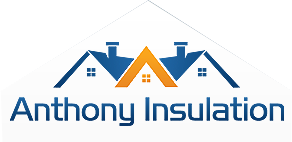Detailed insights of the various options available for home insulation
Importance of home insulation can never be over emphasised. However, there are several types of home insulation that picking the right one can be a difficult task. Though there are several consultants who can advise and give suggestion, you might as well do your homework to make a prudent decision.
Every insulation type comes with a load of benefits as well as some cons too. One for all is not the principle adopted in home insulating materials and so a lot of research and guidance is required before you make the final pick. The following post can be really helpful as it provides the functions and benefits of popularly used home insulation types.
Foam insulation
Spray foam is applied using the spray containers. Made of polyurethane, this is a rigid panel type of insulation capable of providing higher energy efficiency. They have the flexibility to be used in most of the areas of the home and so are widely used in ceilings, floors, walls and so on. This is also an effective method of sealing the abnormal shapes in the home spaces. Its easy application and use of inorganic substance makes it a preferred option among the home owners. Besides, there are several do-it-yourself kits available for foam insulation. Pricing is also quite reasonable for its durability and effective resistance to heat and cold as compared to other forms of insulation.
Blanket insulation
One of the common forms of insulation that comes under the segment of home improvement is the Batt insulation. Fibre glass is the preferred material for this method. This kind of insulation is most recommended for walls, ceilings and roofs. Fibreglass is the most preferred as it is non-flammable and offers inherent fire safety. The appealing aspect of this material is its ability to resist the formation of moisture.
Mineral wool
Popularly known as rock wool insulation, it provides a higher level of efficiency as compared to fibre glass. However, this comes under the premium range of insulation and so is priced a little higher than the fibre. While insulating using fibre, people with respiratory disease must stay out of the area as it tends to create allergic reaction. Such issues are not found in mineral wool insulation. This is the best form for extremely hot climate areas.
Cellulose
An ecofriendly option which is growing in demand due to the concerns of global warming, cellulose is made of recycled paper. Such paper undergoes a chemical treatment that makes them resistant to moisture. The insulating capability of the cellulose is significantly improved through such treatments and it is not affected by pests or termites. However, such material needs a replacement after five years as its efficiency may decline by that time.
Fibre board:
This is the most popular form of insulation used specifically for the attic area. Such insulation is very effective in controlling the external heating of the walls and indispensably used in extreme hot places.
Blown in insulation
Also known as loose fill this is a simple form of insulation. Small pieces of foam or fibre are placed in spaces such that the external structure is not disturbed. They are very useful to implement in old houses and is proven to be effective in controlling the temperature. Older homes may not provide the required space to fit in other sophisticated forms of insulation and so this kind of insulation is the viable choice. Made from recycled materials they are also an ecofriendly method of insulating your adorable homes. It is used mostly in walls and attic.
Understand the pros and cons of different types of insulation before making the final choice.


